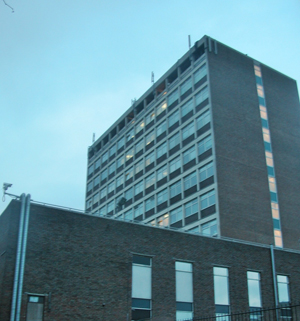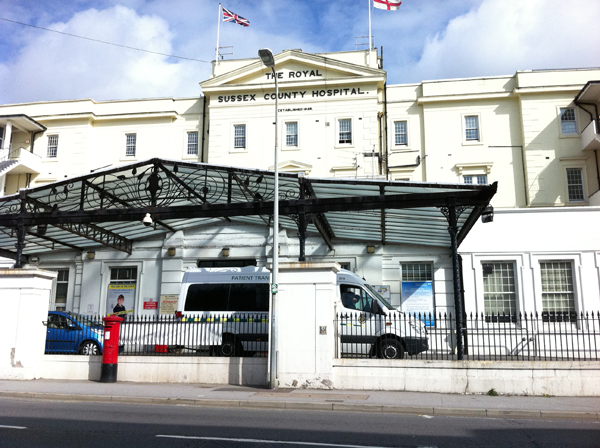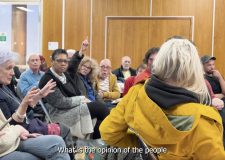Planning applications, Brighton and Hove City Council
Best laid plans
Planning applications may seem dull on the surface but they have a knack of stirring powerful emotions. Frank le Duc reports
Passions can run high at the planning meetings held every three weeks at Hove Town Hall. One angry applicant pelted local politicians with tomatoes. Last week a man living close to proposed new flats for people with dementia hurled abuse at those debating the scheme. Older professionals remember the death of planning officer Harry Collinson, shot by Albert Dryden, in Consett, Co Durham, in 1991.

If planning seems dull on the surface, it becomes less so when people find themselves affected by a scheme. And many do. Planning applications are the bread and butter of local councils up and down the land. Brighton and Hove City Council receives more than 50 applications in an average week. The total for the past year was more than 3,000 – a rise on recent years although the figure was much higher before the credit crunch.
The council’s Planning Committee met last Wednesday (11 December). With an agenda nearly 700 pages long, the meeting started at 10.30am instead of the usual 2.30pm. It finished six and a half hours later. Twelve councillors debated 14 planning applications – ten of them were major applications, although six of those were connected.
As members of the Planning Committee emerged into the dark of night, one of their sternest critics, Valerie Paynter, from Save Hove, tweeted in praise of them. She said: “I congratulate those sitting on the Planning Committee for their ability to concentrate and identify issues in the exceptional all day mtg!”
The public took part too. Planning meetings may not attract the same crowds as Brighton and Hove Albion. But thousands registered their support for or opposition to the football club’s plans before permission was finally granted for the Amex Stadium in Falmer. The last major application dealing with the King Alfred Leisure Centre in Hove also played to a packed house. It emerged later that the scheme’s cheering supporters were actors hired for the occasion to keep out protesters. Both schemes took years to decide.
The applications discussed at last week’s meeting alone generated a response from more than 1,200 people. Almost half of those signed a single petition. The rest wrote to the council by letter or email. The councillors who sit on the Planning Committee often ask applicants whether they have consulted others affected by schemes. As elected representatives, they are more sensitive than most to public opinion.
The high level of public interest in the City College application – with hundreds supporting and opposing the plans – was reflected in the result. Six councillors each voted for and against the £79 million scheme to knock down the Pelham Tower and put up an eight-storey teaching block and a ten-storey building housing 442 student flats. The college’s principal Lynn Thackway had tears in her eyes as the scheme went through on the casting vote of the Planning Committee chairman Councillor Phélim Mac Cafferty.
Votes tend not to go along party lines and so it was with City College. Two of Councillor Mac Cafferty’s Green Party colleagues, Lizzie Deane and Pete West, sent a letter of objection setting out the concerns of many residents. The other North Laine ward councillor Ian Davey usually sits on the Planning Committee and felt understandably obliged not to be seen to have prejudged the application. In the event he was involved in another meeting at the same time last Wednesday so a party colleague took his place.
Kathryn Boggiano, the planning officer who handled the application, also dealt with in another big scheme recently – the £420 million modernisation of the Royal Sussex County Hospital. It seems unfair to single out a single person in some respects but her assured performance did not go unnoticed by at least one veteran observer of these meetings.
Unlike City College, Dorothy Stringer School faced disappointment with its plans. It applied for permission to build a floodlit all-weather football pitch on a piece of ground prone to waterlogging. The plans were rejected by ten votes to two. The school is not the first in recent years to attract opposition to floodlights and artificial sports pitches in place of grass. The loss of two mature elm trees was given as one of the reasons for turning down
the scheme.
Plans to change the face of a corner of The Lanes won approval. Two separate developers, including the locally based Centurion Group, worked hard to win support and neutralise potential opposition. Brighton Square will be given a makeover. A 17th century cottage will be visible to the public for the first time in years. And a new lane will be created.
During the debate Councillor Ben Duncan raised a laugh and gave some pause for thought when he said: “The whole Lanes area is one of the jewels in the crown of this city and it wouldn’t be there if we sat there looking at every single building and every single street next to a set of planning policies. It’s actually the lack of a committee like this historically that has given us much to be proud of in the area.”

Occasional visitors have commented on the need for stamina, a sturdy bladder and a high boredom threshold. But these are useful qualities for anyone taking part in politics. Another criticism is that members of the Planning Committee sometimes seem to focus on the trivial. If this is the case, it may be because the bigger questions are answered in the detailed reports before them.
Last week planning consultant Paul Burgess, from the local firm Lewis and Co, did pose one of the bigger questions. He asked them to think about the effect of their policies when a building – an old children’s home – had stood empty for ten years. The building in question, in Wellington Road, next to Brighton’s first new council houses for 30 years, is not listed. It is liked and admired.
The council’s own plans for 45 flats for people with dementia also attracted criticism. The Brooke Mead proposal in Albion Street, Brighton, includes no car parking spaces. It will have one loading bay. Given that the project is an extra care scheme, it is likely that carers will need to come and go. Councillors Lynda Hyde and Bob Carden, both former chairmen of the Planning Committee, were among those to voice their concerns. Councillor Carden’s late wife Merle was a carer.
They pointed out how little time the council allows for carers to spend with each person. And how that time would be even less if carers had search for a free parking space in the surrounding streets. Councillor Mac Cafferty asked officials for ways to solve the problem with the need to delay the application. Head of planning Jeanette Walsh said that the council owned the surrounding land and promised to explore whether a carer’s parking space could be set aside
“Visitors have commented on the need for a sturdy bladder and a high boredom threshold”
The planning system involves balancing competing interests and Brooke Mead was a case in point. Those competing interests are often advanced by people with passionately held opinions. The outburst from a neighbour of Brooke Mead last week was also a case in point. The outcome of a planning application can have an enormous effect on the financial value of someone’s land or property. This just makes the stakes even higher.
It can take a long time to reach a decision on some applications. The council’s planning chief, Martin Randall, has taken to countering criticism of the process and those who make it work. He regularly updates councillors, developers and the public with the evidence of progress on major projects in Brighton and Hove. But it is underpinned by a determination to ensure that progress continues and to show that Brighton and Hove is a place that is open for business.




















